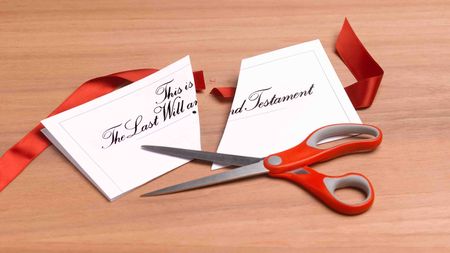Scour the Fine PrintBefore Moving Into a CCRC
Prospective residents need to look beyond the amenities of a continuing-care retirement community and understand the potential financial pitfalls.
EDITOR'S NOTE: This article was originally published in the February 2010 issue of Kiplinger's Retirement Report. To subscribe, click here.
Roger Strand, 81, and his wife, Mary, 80, are considering a move to a continuing-care retirement community. The Strands, who live in the Minneapolis suburbs, like the idea that a CCRC would provide social activities and transportation around town. And they take comfort in knowing that they would remain in the same community if one spouse needed to move into a nursing facility.
But a CCRC is an expensive proposition and not without financial risk. The Strands want to make sure that the CCRC they choose is financially stable. They also want to understand what all the costs will be. As they tour communities in Minnesota and several other states, they're asking operators such questions as: Is there an extra charge for moving into assisted living or a nursing facility? Is the entrance fee fully refundable? And, says Roger, a retired manager in the bakery industry, "What happens if your finances take a huge hit? Do they throw you out on the street?"

Sign up for Kiplinger’s Free E-Newsletters
Profit and prosper with the best of expert advice on investing, taxes, retirement, personal finance and more - straight to your e-mail.
Profit and prosper with the best of expert advice - straight to your e-mail.
The Strands are correct to ask probing questions. The bankruptcy of the Baltimore-based Erickson Retirement Communities, a leading developer of CCRCs with 19 communities nationwide, showed that even top-notch operators can end up in financial trouble. (Redwood Capital Investments, based in Hanover, Md., has since acquired most of Erickson's assets.)
Prospective residents need to look beyond the lovely dining facilities and manicured lawns, and understand the potential financial pitfalls. "You're really going to get dazzled by the CCRCs' marketing," says Joseph Wiseman, an elder-law attorney in Davis, Cal. But he warns that potential buyers should remember that this is a financial transaction, which involves upfront entrance fees of $150,000 to $1 million and monthly payments that could run several thousand dollars. "You don't want to spend this kind of money without doing your homework," says Wiseman.
If you're considering a CCRC, be sure to take a tour. Have a meal there, and ask to stay overnight. Ask residents and their families about staffing levels and turnover, any recent fee increases and how the CCRC determines when it's time to move from one level of care to another, says Eric Carlson, a long-term-care specialist at the National Senior Citizens Law Center, in Los Angeles. Also, he says, ask residents: "What surprised you, positively or negatively, about the way the CCRC operates or about the care that is provided?"
Check whether the CCRC is licensed by the state. State laws for CCRCs vary. An accreditation by the Commission on Accreditation of Rehabilitation Facilities (www.carf.org; 888-281-6531) is a plus. This organization evaluates CCRCs' business practices and financial performance.
Can the CCRC Deliver on Its Promises?
The two most important documents for assessing the costs and the financial outlook are the contract and the financial report. Make sure your accountant, financial adviser or lawyer reviews both documents. The contract will lay out the fees and costs and what services you will get for your money. The financial statement will provide some clues as to whether the facility can follow through on its promises. "You have to consider worst-case scenarios," says Carlson. "People assume that if they're making a large upfront payment, they're set for life. But in many cases, they may not be."
The contract will address one of the most important questions: What happens to your entrance fee when you move out or die? Many CCRCs will market a 100% refundable deposit, but the fine print may stipulate that a full deposit will depend on whether your unit is sold for its purchase price. "If it's a refundable entrance fee, ask what percentage you would get back, and when," says Susanne Matthiesen, managing director of the accreditation commission. If it takes a long time to find a new tenant, there could be a delay in getting your deposit back.
In some cases, you have no right to any refund. Dennis Sandoval, an elder-law attorney in Riverside, Cal., recalls meeting with an individual several years ago. The person's mother had died one year after moving into a CCRC, and the children thought that her $250,000 entrance fee would return to her estate. "The facility said, 'No, you don't get the money back,' " he says. Sandoval looked at the contract and verified that the mother had agreed not to receive a refund.
[page break]
You'll be safest if the CCRC holds your entrance fee in a separate escrow account. Escrowed fees cannot be spent for operating expenses. "If money is not escrowed, it could be lost in a bankruptcy," says Mark Taylor, a bankruptcy lawyer in Washington, D.C.
On top of the entrance fee, CCRCs charge monthly fees for services such as meals, transportation and activities. Find out what is included in the monthly rate. Some CCRCs set lower monthly fees for limited services and charge additional fees for extra services. Ask for a list of those extra charges.
Check your contract to see whether the CCRC will charge extra if you or your spouse needs to move to assisted living or nursing care. Some entrance deposits cover these expenses, but not all do. "When your care needs go up, your expenses could go up," says Carlson.
Find out about the policy for monthly fee increases. Many communities raise fees 3% to 5% a year. Ask how many fee increases there have been over the past few years and how much the fee has increased. "If you know the monthly fee has increased 5% every year, it will help you with financial planning," says Matthiesen.
What if you can't cover your monthly fees? Some facilities will evict you after several months of nonpayment. "Ask the CCRC what the policy is if the resident is unable to make monthly payments," says Eve Stern, co-founder of SnapforSeniors, a Seattle-based company that collects data on senior housing.
Many nonprofit CCRCs have benevolent funds to assist residents who are in financial trouble. However, you will need to check the financial statement to see if there is enough money in the fund to help struggling residents.
With eviction a possibility, determine whether you can afford to make the monthly payments for the rest of your life, and be sure to account for likely fee hikes. You'll need to look at your finances, age and health.
The financial health of the retirement community could affect your fees, the quality of services and whether you'll get your deposit back. One indicator of financial stability is the occupancy rate. A reasonable explanation of a low rate could be if the community is new or undergoing extensive renovation. However, if occupancy rates have declined in recent years, you may have cause for concern. Wiseman says that he wouldn't advise a client to go into a CCRC unless there was at least a 90% occupancy rate.
With the housing downturn, fewer people are willing or able to sell their homes and move into CCRCs. Say a CCRC bases monthly fees on occupancy rates of 80%. "What happens if the community drops to 60% occupancy? How will that affect your fees? They could have residents make up the difference," says Stern.
Deficit Spending a Bad Sign
Take a close look at the annual financial statement, with special attention paid to total expenses and total revenue. If expenses exceed revenue, that's a red flag. "If they're operating at a deficit and don't have financing to cover the hole, the CCRC operator could go into bankruptcy," says Taylor, the bankruptcy lawyer. Even if the community is not teetering on bankruptcy, an operating loss could force the CCRC to reduce services or raise fees. The effect could be the same whether the CCRC is owned by a nonprofit group or a for-profit company.
Ask the management how long it's been operating at a deficit and how much longer it can afford to do so. It could be a temporary problem that it can cover with cash reserves. "You've got to ask, 'What is your plan?' " says Matthiesen.
A financial statement could reveal how a CCRC spends its money. Wiseman is reviewing a complaint from a CCRC residents' council, a liaison between residents and management. He says the residents believe that management is inappropriately dipping into the reserve account, which is funded with their monthly fees, for expenses such as marketing. They contend that the reserve should be tapped for emergency repairs and other necessary expenses.
For developed communities, ask about plans for future expansions and renovations and how they will be paid for. Be sure to scrutinize a community that is under construction and does not have any residents yet. Find out whether the company has built other successful communities. If you're willing to take the chance, make sure the owner will have the money for a refund if the community fails to get going.
For a checklist to help you with your CCRC search, visit SnapforSeniors.com (click "Housing," then "CCRC resources and tools"). Also look at the accreditation commission's Consumer Guide to Understanding Financial Performance and Reporting in Continuing Care Retirement Communities.
For more authoritative guidance on retirement investing, slashing taxes and getting the best health care, click here for a FREE sample issue of Kiplinger's Retirement Report.
Get Kiplinger Today newsletter — free
Profit and prosper with the best of Kiplinger's advice on investing, taxes, retirement, personal finance and much more. Delivered daily. Enter your email in the box and click Sign Me Up.
-
 Stock Market Today: Stocks Are Mixed Before Liberation Day
Stock Market Today: Stocks Are Mixed Before Liberation DayMarkets look forward to what comes with the reordering of 80-year-old global trade relationships.
By David Dittman Published
-
 Stagflation: What It Is and Why Retirees Should Care
Stagflation: What It Is and Why Retirees Should CareStagflation — the economic bogeyman of the 1970's — may return to the US. Here's what it could mean to your retirement.
By Donna Fuscaldo Published
-
 457 Plan Contribution Limits for 2025
457 Plan Contribution Limits for 2025Retirement plans There are higher 457 plan contribution limits for state and local government workers in 2025. That's good news for state and local government employees
By Kathryn Pomroy Last updated
-
 Medicare Basics: 11 Things You Need to Know
Medicare Basics: 11 Things You Need to KnowMedicare There's Medicare Part A, Part B, Part D, Medigap plans, Medicare Advantage plans and so on. We sort out the confusion about signing up for Medicare — and much more.
By Catherine Siskos Last updated
-
 The Seven Worst Assets to Leave Your Kids or Grandkids
The Seven Worst Assets to Leave Your Kids or Grandkidsinheritance Leaving these assets to your loved ones may be more trouble than it’s worth. Here's how to avoid adding to their grief after you're gone.
By David Rodeck Last updated
-
 SEP IRA Contribution Limits for 2025
SEP IRA Contribution Limits for 2025SEP IRA A good option for small business owners, SEP IRAs allow individual annual contributions of as much as $69,000 in 2024 and $70,000 in 2025..
By Jackie Stewart Last updated
-
 Roth IRA Contribution Limits for 2025
Roth IRA Contribution Limits for 2025Roth IRAs Roth IRA contribution limits have gone up. Here's what you need to know.
By Jackie Stewart Last updated
-
 SIMPLE IRA Contribution Limits for 2025
SIMPLE IRA Contribution Limits for 2025simple IRA The SIMPLE IRA contribution limit increased by $500 for 2025. Workers at small businesses can contribute up to $16,500 or $20,000 if 50 or over and $21,750 if 60-63.
By Jackie Stewart Last updated
-
 457 Contribution Limits for 2024
457 Contribution Limits for 2024retirement plans State and local government workers can contribute more to their 457 plans in 2024 than in 2023.
By Jackie Stewart Published
-
 Roth 401(k) Contribution Limits for 2025
Roth 401(k) Contribution Limits for 2025retirement plans The Roth 401(k) contribution limit for 2025 increased, and workers who are 50 and older can save even more.
By Jackie Stewart Last updated